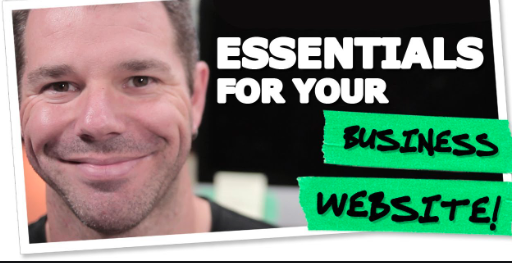Essentials for Your Small Business Website : Part 2 of 2

By Debbie Gregory.
As a small business, you need to maximize your business site’s value as a marketing tool. Your site needs to attract visitors, build their trust, engage and inform them and finally convert them into customers.
Part 1 of this series covered your images, calls to action, your about us page, and the importance of FAQ pages. We will continue in Part 2 of this series by going over your value proposition, trust signals, social proof, and why your site should have separate landing pages for important services or products.
5.) A Clear Value Proposition Is Essential To Your Website:
Your website also needs to clearly and quickly spell out why a consumer should buy your product or service. This is best done with a quick tag line, slogan, or proposition statement that is included on every page of your site or alongside your company logo. The best value proposition statement will target your ideal customer, define the problem you solve for them, and explain what makes your solution unique. It will also create your own identity.
Some Good Corporate Examples Include:
- Geico’s old slogan “15 minutes could save you 15% or more.”
- WalMart’s “Save money, live better.”
- Allstate’s “You’re in good hands.”
- Disneyland’s “Where dreams come true.”
6.) Make sure to Include Trust Signals and Social Proof:
Both trust signals and social proof are critical for small business websites and can impact whether or not someone chooses to conduct business with you and generate revenues for your business. These two items are the best way for your business to build credibility and boost sales.
A few examples of trust signals include:
- Badges/logos for accreditation bodies
- Money back guarantees
- Payment assurance certifications
A few examples of social proof include:
- Case studies
- Customer Reviews (ideally from third-party platforms such asYelp)
- Testimonials
7.) Optimizing Your Landing Pages:
A landing page is a page that is designed to be a place where a visitor “lands” after clicking a link in an ad or social post. A landing page is designed with a clear goal, minimal distractions, and leads your website visitors to call, visit, or purchase from you. A landing page can be your site’s homepage but it should ideally be a separate, highly focused, sales tool page.
Just like your overall website, your landing page should include:
- A compelling headline
- High quality graphics
- Your value proposition
- Clear benefits to the customer
- Social proof
- Trust signals
- A strong call to action
As you can see, your website can be a powerful marketing tool as long as it contains the right mix of essential elements. Your site needs to build trust, educate, entertain, inform, and guide prospective customers. Your call is to lead visitors to call, visit, or purchase from you. Incorporating these seven essentials on your website will certainly provide your small business site a boost.











